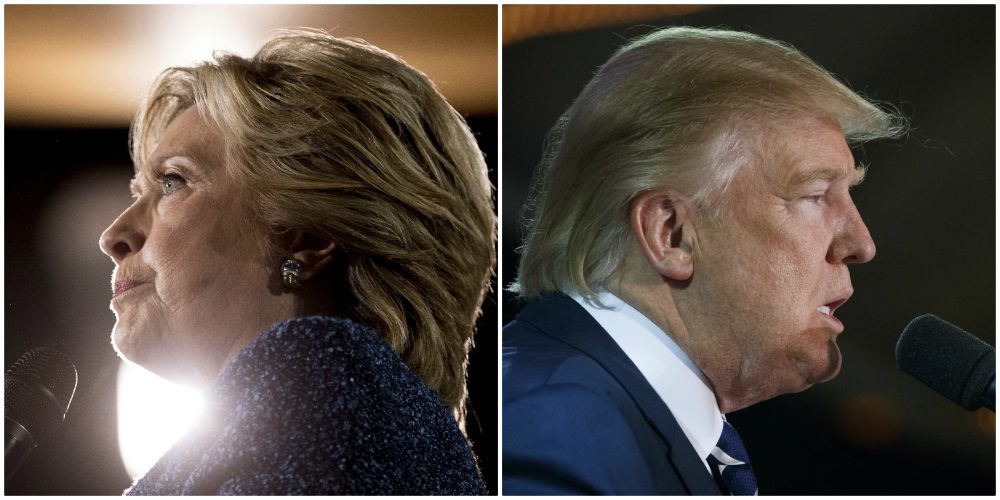Advertisement
A Recount Won't Change The Election Outcome, But Here's Why It's Still Important

COMMENTARY
She may have failed to disrupt the Democratic Convention in Philadelphia. Sure, she only won 1 percent of the popular vote. But, Green Party presidential nominee Jill Stein is still determined to make an impact on the 2016 election.
On Thanksgiving Eve, Stein announced her party will seek a recount in three states: Michigan (where Trump won by 0.24 percent), Pennsylvania (Trump +1.15 percent), and Wisconsin (Trump +0.92 percent).
The recount can put rumors of a rigged, hacked or otherwise unfair election to rest. That should be welcome news, regardless of which candidate you supported. However, it’s important to understand what the effort is expected to accomplish and what it probably will not.
The irregularities were found using models but, if we have learned anything this election, it’s how we should take statistical models with a grain of salt.
With apologies to those still clinging to flotsam as November’s less-than-perfect storm goes out to sea, this recount will likely not change the outcome of the election. In his statement announcing the Clinton campaign’s participation, general counsel Mark Elias noted the campaign is “fully aware that the number of votes separating Donald Trump and Hillary Clinton in the closest of these states — Michigan — well exceeds the largest margin ever overcome in a recount.” Recounts would need to reverse Trump’s victories in all three states for Clinton to win the Electoral College, and only Wisconsin has officially announced a recount so far (to begin this Thursday).
Ostensibly, Stein isn’t trying to change the election’s outcome. On her website, Stein describes the recount efforts as part of a larger movement to increase “election integrity.” While “rigged” has been the term-du-jour this campaign season (to her credit, Stein used “untrustworthy”), ensuring the integrity of the voting system is important. For years, it seemed election results were taken at face value. Free and fair until someone discovers a bag of ballots or sack of cash proving otherwise. The burden of proof was formerly on the accuser to provide such evidence that the vote was rigged.

The opposite has started to become true. Despite an absence of proof, voter fraud is perceived to be a widespread problem in the United States. Just weeks before the election, a POLITICO/Morning Consult poll revealed 41 percent of voters surveyed (and 73 percent of Republicans) felt widespread voter fraud could tip the election. The shift in opinion has put election commissions in the unenviable position of proving a negative.
Without hard evidence, opinions on whether an election was rigged depends on which candidate the accuser supported and how closely their side lost. (Although, sometimes even the winning candidate claims the election he won was rigged.)
Stein’s recount hinges on an approximation of this evidence. The Green Party selected Michigan, Pennsylvania and Wisconsin because independent experts identified “statistical anomalies that raised concerns in these three states.” The irregularities were found using models but, if we have learned anything this election, it’s how we should take statistical models with a grain of salt.
Failing to get to the bottom of the rigged election rumors make it too easy to dismiss Trump’s victory as a fluke instead of what it (probably, pending recount) is: an all-too-real indication of the current state of the union.
This is why it’s important to take a look at three case studies at the fundamental vote level. It’s necessary to prove the integrity of our elections and not judge them based on static anecdotes and statistical models. In doing so, we can perhaps suss out where and how voter fraud occurs, or we can put that theory to rest for good (for now, anyway).
Presumably the recounts in Wisconsin and potentially elsewhere won’t turn up anything but, to be fair, there’s no way to know. In this year of outliers, just maybe the vote was hacked by Moscow or “somebody sitting on their bed that weighs 400 pounds.” Either way, it would be good to know conclusively; speculation alone makes denial all too easy.
That’s why we need this recount. Our television screens and Facebook feeds are full of people in denial that their country could produce such an outcome. Failing to get to the bottom of the rigged election rumors make it too easy to dismiss Trump’s victory as a fluke instead of what it (probably, pending recount) is: an all-too-real indication of the current state of the union.
